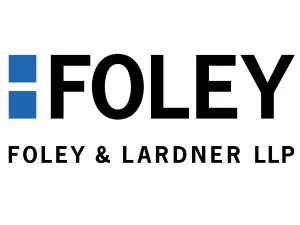- in South America
- in South America
- with readers working within the Business & Consumer Services and Media & Information industries
- within Criminal Law, Government, Public Sector and Tax topic(s)
The U.S. Department of Labor's Occupational Safety and Health Administration (OSHA) released the Emergency Temporary Standard (ETS) that concerns vaccine mandates and large private employers early Thursday, November 4th. Covered employers must comply with the ETS by December 5, 2021. The ETS allows covered employees to complete their respective vaccination regimen by January 4, 2022 (and therefore the testing requirements will not be required until then).
Below are a few important takeaways (we will have a more comprehensive discussion about the below and recommendations for best practices published in the coming days):
- Covered Employers: 100 or more employees. To
determine if the employer meets the threshold, employers must
consider: (1) all U.S. locations, (2) includes all part-time
employees, but not independent contractors; (3) all locations of
corporate entity with multiple locations; (4) franchises treated
separately; (5) integrated companies that handle safety matters as
one company are considered a single employer; (6) temps/staffed
employees not counted; and (7) multi-employer
sites such as construction sites – each employer counts only
its own employees.
- The ETS does not apply to federal contractors and healthcare
covered entities which are subject to their own mandates. With
respect to the latter group, the Centers for Medicare &
Medicaid Services ("CMS") provided a release regarding
its Rule – also this morning – with
its requirements, and included a link to an FAQ. Healthcare providers should know that the
Rule does take effective tomorrow.
- The ETS does not apply to federal contractors and healthcare
covered entities which are subject to their own mandates. With
respect to the latter group, the Centers for Medicare &
Medicaid Services ("CMS") provided a release regarding
its Rule – also this morning – with
its requirements, and included a link to an FAQ. Healthcare providers should know that the
Rule does take effective tomorrow.
- Covered Employees: The ETS covers
approximately all employees except those employees who work
remotely from their homes, exclusively by themselves, or
exclusively outdoors. The exclusions might, for instance, include
landscapers, but if they ride in vehicles with others, then the
employee is covered.
- If an employee is not fully vaccinated, they cannot work in the
workplace unless tested at least once every seven days and provide
results no less than the seventh day following the date the
employee last provided a test result. These tests cannot be
self-administered or self-read unless observed by the employer. The
ETS does not require the employer to pay costs for testing, if the
employee chooses not to get vaccinated, except if the employer is
obligated under other federal/state laws or a collective bargaining
agreement (or if the reason for not getting the vaccination is due
to an accommodation for a disability or sincerely held religious
belief).Mandatory Vaccination Policy or Weekly Testing
& Face Coverings: Covered employers must implement a
mandatory vaccination policy or require employees to wear face
coverings and submit to weekly testing in lieu of
vaccination.
- "Fully vaccinated" means two weeks after an employee
has completed their final injection of a vaccination.
- If an employee is not fully vaccinated, they cannot work in the
workplace unless tested at least once every seven days and provide
results no less than the seventh day following the date the
employee last provided a test result. These tests cannot be
self-administered or self-read unless observed by the employer. The
ETS does not require the employer to pay costs for testing, if the
employee chooses not to get vaccinated, except if the employer is
obligated under other federal/state laws or a collective bargaining
agreement (or if the reason for not getting the vaccination is due
to an accommodation for a disability or sincerely held religious
belief).Mandatory Vaccination Policy or Weekly Testing
& Face Coverings: Covered employers must implement a
mandatory vaccination policy or require employees to wear face
coverings and submit to weekly testing in lieu of
vaccination.
- Proof: Covered employers must
require vaccinated employees to provide proof of vaccination status
either by vaccine card, medical paperwork or an attestation. An
attestation is sufficient IF the employee also attests that they
lost the medical paperwork and cannot provide it (under an
acknowledgement that they are subject to criminal penalties for
lying). A covered employer must maintain these records as they
would other confidential medical documents.
- The proof of vaccination may be provided in a digital format
such as a digital photograph, PDF or scanned image. The proof of
vaccination may not be submitted verbally.
- The proof of vaccination may be provided in a digital format
such as a digital photograph, PDF or scanned image. The proof of
vaccination may not be submitted verbally.
- Employee Roster: Covered employers must
maintain an employee roster that lists employees and whether they
are fully vaccinated, partially vaccinated, not fully vaccinated
because of a medical or religious accommodation, or not fully
vaccinated because they have not provided acceptable proof of
vaccination status (the roster must be provided to OSHA upon
request).
- Paid Time Off: Covered employers must provide
"reasonable time" (including up to 4 hours of paid time
off) for employees to get vaccinated. Covered employers must also
provide "reasonable time" (including paid sick leave) for
employees to recover from any side effects associated with the
vaccination.
- OSHA Reporting: Work-related fatalities and
hospitalizations must be reported to OSHA (if more
likely than not caused or contributed to the workplace) within
certain timeframes (8 hours for fatalities; 24 hours for
hospitalizations). This requirement is consistent with OSHA's
present reporting guidance on COVID-19-related incidents and
fatalities.
- Preemption: The ETS preempts state and local laws that are inconsistent with or conflict with the ETS guidance.
The content of this article is intended to provide a general guide to the subject matter. Specialist advice should be sought about your specific circumstances.



